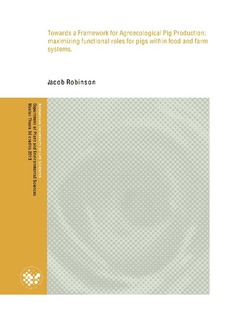| dc.contributor.author | Robinson, Jacob | |
| dc.date.accessioned | 2014-02-13T12:10:06Z | |
| dc.date.available | 2014-02-13T12:10:06Z | |
| dc.date.copyright | 2013 | |
| dc.date.issued | 2014-02-13 | |
| dc.identifier.uri | http://hdl.handle.net/11250/189657 | |
| dc.description.abstract | A theoretical farm design is presented which includes pigs in a number of multi-functional roles, and is built from observations gained during three case studies. The model incorporates pigs as utilizers of waste-food resources, as 'tillers' in integrated pig/crop production, and as species beneficial to agroforestry systems. Two additional historical case studies were conducted in order to construct a theory of how the theoretical farm design might change in response to changes in the intensity of land use and distance from the natural ecology of wild Sus scrofa. The selection of case studies grew in response to previous ones, and attention is given to the learning process involved. | no_NO |
| dc.language.iso | eng | no_NO |
| dc.publisher | Norwegian University of Life Sciences, Ås | |
| dc.subject | pigs | no_NO |
| dc.subject | disconnection | no_NO |
| dc.subject | agroecology | no_NO |
| dc.subject | livestock integration | no_NO |
| dc.subject | forests | no_NO |
| dc.subject | waste-food | no_NO |
| dc.subject | learning | no_NO |
| dc.title | Towards a framework for agroecological pig production : maximizing functional roles for pigs within food and farm systems | no_NO |
| dc.type | Master thesis | no_NO |
| dc.subject.nsi | VDP::Agriculture and fishery disciplines: 900::Agriculture disciplines: 910::Livestock breeding, rearing, reproduction: 912 | no_NO |
| dc.source.pagenumber | 95 | no_NO |
